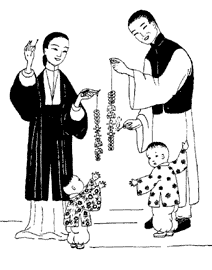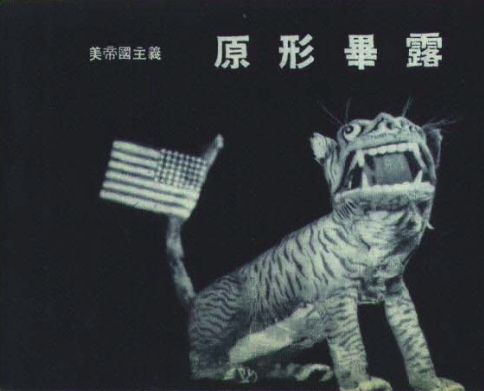User:Mahimol28/sandbox
The Paper Menagerie
[edit | edit source]
Text
Here is the text for Paper Menagerie. Enjoy the entire history
Author Biography
[edit | edit source]Ken Liu was born in 1976. Originally from China, he immigrated to the United States when he was 11. His family lived in Connecticut. As a college student At Harvard College, he studied English and Computer Science. While Liu has worked as a software engineer, corporate lawyer, and litigation consultant, he also is famous for writing science fiction. He has won the Nebula, Hugo, and World Fantasy awards and top genre honors in Japan, Spain, and France, among other countries. Liu has also translated the works of multiple Chinese authors into English.
Learn more about Ken Liu and how he develops his writing skill.
Summary
[edit | edit source]Jack, a little boy from Connecticut, enjoys playing with origami animals that his Chinese mother introduces him to. This paper menagerie comes to life when she blows into them. As Jack grows
Into a teenager, he tries to fit in with the surrounding American community. He begins to reject his mother's community, as represented by Jack’s mother, who tries very hard to speak English and changes her habits to satisfy him. After Jack's mother dies without reconciliation with her son, Jack finds a message from his mother in one of the origami animals, learns about her past, and reconnects with her by writing back to her on the message on the day of Qingming, the Chinese Festival for the Dead.
Analysis
[edit | edit source]
“The Paper Menagerie” demonstrates how an individual can belong to a community, vanish from it,
and get reconnected. In the story, Jack, who was born in the Year of the Tiger, is represented by Laohu, an origami tiger that becomes alive through Jack’s mother’s magic: “I didn't know this at the time, but Mom's kind was special. She breathed into them so that they shared her breath and thus moved with her life. That was her magic.” Laohu’s life starts in the menagerie, which represents the mother’s culture, and this community is introduced, accepted, and enjoyed by Jack when he is a child. These are the secure and comfortable years.

However, belonging to a community that gives one life and provides one with all sense of belonging can be destroyed. An origami tiger is fragile and easy to break out into pieces. When Jack’s family moves into a new town and Jack into a new school, he encounters new perspectives of what is acceptable. Laohu is introduced to Mark, an All-American boy who likes to play with Star Wars action figures. When Laohu accidentally breaks Mark’s action figure, Mark retaliates by tearing Laohu apart: “Mark grabbed Laohu, and his snarl was choked off as Mark crumpled him in his hand and tore him in half. He balled up the two pieces of paper and threw them at me. ‘Here's your stupid cheap Chinese garbage.’” From this moment on, life for Laohu becomes difficult to the point that he never seems the same again. Jack tries to fix him back to what he was, but nothing seems to work. He is condemned to live in a box for a long time, even though the menagerie resists Jack’s rejection: “[t]he animals had escaped and took over their old favorite spots in my room. I caught them and put them back into the shoebox, taping the lid shut. But the animals made so much noise in the box that I finally shoved it into the corner of the attic as far away from my room as possible.” Jack forces himself to forget the community the menagerie represents and instead joins Mark’s all-American community. Many years later, the fragile Laohu comes back from the darkness when Jack’s memory of her mother making an origami shark for him breathes new life into the paper tiger: “The ball of paper shifted, unfurled itself, and I saw that it was Laohu, who I hadn't thought about in a very long time. ‘Rawrr-sa.’ Mom must have put him back together after I had given up.” As we can see, Jack’s mom never gives up hope that her son may love her again and now Laohu carries a message within himself that helps Jack reconnect with his mother’s community. Because Jack does not know how to read Chinese, he needs to seek help from someone who does, and as he listens to the story of his mother’s life and her family, he gets back a sense of community. After communicating his love to his mother through the message written on Laohu, Jack’s final act is to accept his mother’s heritage: “Following the creases, I refolded the paper back into Laohu. I cradled him in the crook of my arm, and as he purred, we began the walk home.” Laohu is finally back where he has always belonged proving that even though we may ignore where we have come and try to reject our legacy for the rest of our lives, our roots and blood live in us.
Connection to Hispanic teenagers growing up in two cultures.
[edit | edit source]Check this life story. Discover and learn about other teenagers who identify biracial and how they feel to be part of two different cultures. Advantage or disadvantage?
Critical thinking questions
[edit | edit source]- In your opinion, can bi-racial teenagers have an advantage in society? why
- Should Jack believe and respect his mother's beliefs no matter what? Or is it his mother's fault for Jack's behavior? Explain why
- Can bi-racial teenagers feel identify with Jack's story? Justify your answers
- What would you do differently if you were Jack? Jack’s mother?
Discussion
[edit | edit source]Click here Tell us how you feel about the history and if your life is related to the history. Also, share any recommendations on managing to be part of two cultures and help others with your history.
Create your own Laohu
[edit | edit source]
In this first part. You will learn how to make the first section of the tiger. You will know on a small piece of paper, but after the training, you can do it on a more significant portion of the paper. Be patient and do this in sections.
In the second part, you will start with a more substantial piece of paper, and you can use colored paper to give a more realistic impression. Also, you will need something to help make the lines more perfect.
In the last part, the tutor will provide some tips to do a better job. Also, tell you that you may need glue to ensure some features stay in place and finally get the origami tiger.
References
[edit | edit source]https://en.wikipedia.org/wiki/Ken_Liu
https://imdiversity.com/diversity-news/young-latinos-born-in-the-u-s-a-carving-their-own-identity/
https://gizmodo.com/read-ken-lius-amazing-story-that-swept-the-hugo-nebula-5958919